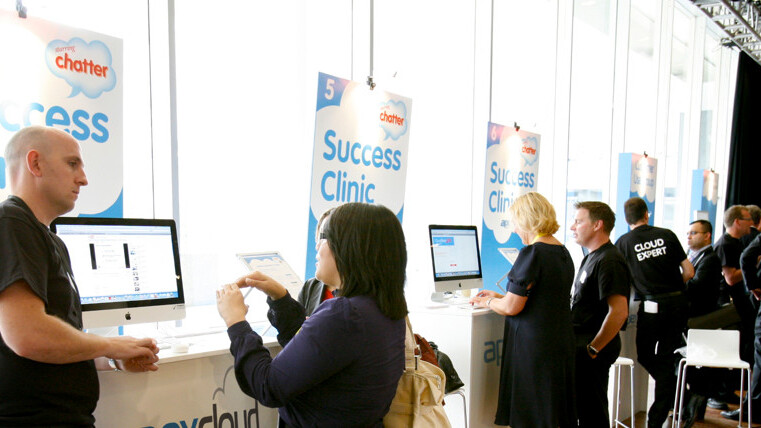
We’re privileged today to bring you a guest post by Kraig Swensrud, Senior Vice President of Product Marketing for Salesforce.com. In this role he responsible for marketing strategy and execution across all products, including Salesforce CRM with Chatter and the Force.com platform.
You have hundreds of friends on Facebook, are re-tweeted daily, and are the “Mayor” of your local coffee shop. You’ve mastered social networking in your personal life, but what about at work?
The success of social networking sites, such as Facebook and Twitter, has shown companies that enterprise-wide collaboration can be a pivotal growth driver. Many are now adopting similar technologies – designed specifically for business – to reduce communication barriers and improve workforce productivity.
Enterprise social networking is taking off globally as businesses of all sizes see how it promotes employee collaboration and communication across departments, geographies, and areas of expertise. Instead of using email, employees have discovered that profiles, status updates, real-time feeds, filters and groups offer a better way to consume, share and manage information. In fact, Gartner predicts that within four years, social media will replace email in 20 percent of all businesses.
The paradigms pioneered by social networking sites transfer well to the workplace: Instead of following @apluskor @cnn, you follow people on your team, the activity in your top customer accounts, new marketing campaigns, time-sensitive projects, and critical business documents. You’re able to gain the insights you need from a real-time feed — all within a completely secure and private environment. And because these new social tools are based on the Web, you can access them from anywhere, whether you’re on your Mac, iPad 2 or Droid.
What’s great about enterprise social networking is that everyone already knows how to do it. But remember, this is the workplace we’re talking about. So no posting last weekend’s party pictures or sharing updates about your family. Instead, the key is using social networking features to transform the way you work.
Here are 5 tips for enterprise social networking to help guide you to success:
1. Ensure executive buy-in and enlist champions. Enterprise social networking is a radical yet necessary change for our email-centric cultures. Whether the decision to deploy this technology comes from the top or is driven by employee demand, it takes commitment from leadership to get everyone participating. The good news: many top executives are looking to transform their culture and flatten the organization, making it easy to get the executive support you need.
2. Spell out etiquette. Remind employees that you’re still in a corporate environment. Develop guidelines for employees, such as keeping profile pictures professional and updates focused on work. While it may seem obvious, you don’t want to be surprised.
3. Make it available to every employee, everywhere. The more people in your company participate with the product, the more valuable and useful the product becomes. Also, in today’s world, accessibility and choice are key to adoption, whether via a browser, desktop, or mobile app. Conversations and productivity will increase when everyone has access from any device, anywhere.
4. Be selective. You may accept every friend request on Facebook and retweet at every opportunity, but workplace productivity is not a popularity contest. Be selective with who and what you follow at work. Keep your feed meaningful – follow documents that are crucial, colleagues who provide valuable perspectives, and company leaders for insight on corporate objectives. Focus on the information that will help you do your job better.
5. Set goals from the start. The overarching benefit of workforce collaboration is to improve productivity, so determine how you will map this value to business objectives. For example, determine how to measure productivity gains from fewer meetings, access to information, reduction in email usage or through improved collaboration on sales leads, customer projects or marketing campaigns.
Enterprise social networking can revolutionize the way we work. It offers the same benefits that come from large-scale collaboration on sites like Facebook and Twitter, but with the advantage of adding business context and enterprise security. By eliminating productivity barriers erected by yesterday’s technologies, we’re creating a collaborative environment that can inspire us to engage, innovate, and strengthen our workplace.
Get the TNW newsletter
Get the most important tech news in your inbox each week.




